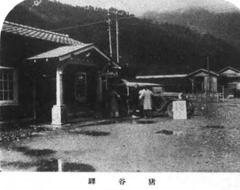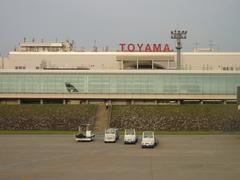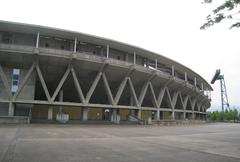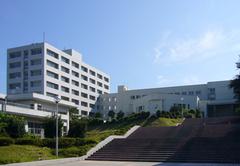
Arimine Dam Visiting Hours, Tickets, and Travel Guide – Toyama, Japan
Date: 04/07/2025
Introduction
Arimine Dam, nestled in the majestic mountains of Toyama Prefecture, is an outstanding example of Japan’s postwar engineering and environmental stewardship. With its iconic S-shaped design and a soaring 140-meter height, this gravity-type concrete dam plays a crucial role in hydroelectric power generation, flood control, and irrigation. Beyond its functional importance, Arimine Dam and the surrounding Lake Arimine area offer breathtaking natural scenery, rewarding hiking, and access to cultural treasures, making it a must-visit site for travelers seeking a blend of history, technology, and the great outdoors (Wikipedia; Dammania; Power Technology).
This comprehensive travel guide provides detailed information on Arimine Dam’s visiting hours, ticketing, accessibility, travel tips, and highlights of nearby attractions, as well as insights into its historical and cultural significance.
Historical and Cultural Significance
Vision, Construction, and Engineering
The origins of Arimine Dam are rooted in the unique topography and water resources of Toyama’s Chūbu region. The Wada River, with its steady flow and steep valleys, attracted early 20th-century engineers aiming to harness hydroelectric power and protect local farmland from floods (Wikipedia). Initial construction began before World War II but was interrupted by the conflict. Postwar, the Hokuriku Electric Power Company resumed and completed the dam in the 1950s, emphasizing energy production to fuel Japan’s rapid economic growth (Dammania).
Arimine Dam’s distinctive S-shaped curve enhances both its structural integrity and visual appeal. At 140 meters tall, it creates Lake Arimine, whose 222 million cubic meter capacity surpasses even the renowned Kurobe Dam (Dammania; Power Technology). The dam powers several hydroelectric stations with a total output of approximately 385 MW, supporting Toyama’s reputation as a leader in renewable energy and sustainable development (Nikkei Asia).
Multifunctional Role and Community Impact
Besides electricity generation, Arimine Dam mitigates flood risks and supports local agriculture by regulating river flow and supplying irrigation water. Hokuriku Electric Power Company oversees the dam, which serves as a regional flagship for hydroelectric innovation and environmental management (Dammania). Its construction and operation have shaped the local economy, community identity, and even regional tourism, thanks to the scenic Lake Arimine and dramatic mountain setting (Navitime Japan; Everything Explained Today).
Visiting Arimine Dam: Practical Information
Visiting Hours and Access
- Open Season: Late April to mid-November (closed in winter due to heavy snow)
- Typical Hours: 8:00 AM – 5:00 PM (seasonal variations apply)
- Access: Via the toll-based Arimine Forest Road (有峰林道); toll is approximately 1,000 yen one-way. The road is open only during the dam’s accessible season.
- Getting There: Most visitors drive from Toyama City (about 90 minutes via mountain roads). Seasonal bus tours may be available; check with local tourism offices (Navitime Japan; Japan Travel).
Tickets and Entry Fees
- Dam & Lake Access: Free of charge—no admission ticket required.
- Arimine Forest Road: Toll applies for vehicles.
- Guided Tours: Not routinely available, but special events and educational tours may be arranged by local tourism offices or Hokuriku Electric Power Company.
Accessibility
- By Car: Parking is available near the dam and lake. Arrive early during peak seasons.
- Public Transport: Limited; check for seasonal tours or shuttle options.
- Mobility: Main observation points and visitor center are partially accessible; hiking trails and mountain huts are not wheelchair-friendly due to terrain.
Facilities and Services
- Visitor Center: Offers educational exhibits, restrooms, and a small café.
- Picnic Areas: Available near the dam.
- Restrooms: Located at the dam and visitor center.
Travel Tips
- Dress in layers and bring rain gear; mountain weather can change quickly.
- Early morning or late afternoon are best for photography.
- Respect all posted guidelines to preserve the natural environment.
Attractions and Activities
Around Arimine Dam & Lake Arimine
- Scenic Walks: Enjoy panoramic views from the dam’s crest and lakeshore trails.
- Hiking: Trail options range from gentle lakeside walks to challenging mountain treks (prime hiking season: June–October).
- Fishing & Boating: Permitted on Lake Arimine during summer months; permits may be required.
- Wildlife & Flora: The area is part of Chubu-Sangaku National Park and home to diverse alpine species.
Nearby Natural and Cultural Attractions
Tateyama Kurobe Alpine Route
A world-renowned 37 km mountain route featuring dramatic alpine scenery, snow corridors in spring, and vibrant autumn foliage. Accessible by cable cars, buses, and trolley buses (touristplaces.guide).
Shomyo Falls
Japan’s tallest waterfall at 350 meters, best viewed from late April to June (touristplaces.guide).
Takamagahara Onsen
Japan’s most remote hot spring, reachable by a demanding multi-day hike from Arimine Dam (tophotsprings.com).
Cultural Experiences
- Festivals: Plan your visit around events such as the Sannou Festival or Kokiriko Festival for local music, dance, and cuisine (visit-toyama-japan.com).
- Local Cuisine: Try Toyama Bay sushi, masu-zushi, and regional hot pot dishes (japansaver.com).
Frequently Asked Questions (FAQs)
Q: What are Arimine Dam’s visiting hours?
A: Typically 8:00 AM to 5:00 PM, from late April to mid-November. Closed in winter.
Q: Is there an entrance fee?
A: No. Access to the dam and Lake Arimine is free; only the access road has a toll.
Q: How do I get there from Toyama City?
A: By car via the Arimine Forest Road (approx. 90 minutes); check for seasonal buses or tours.
Q: Are guided tours available?
A: Occasionally, for special events. Check with local tourism offices in advance.
Q: Is the site wheelchair accessible?
A: Some observation areas are, but hiking trails and huts are not due to rugged terrain.
Q: What is the best time to visit?
A: June to October for hiking and optimal weather.
Summary and Recommendations
Arimine Dam is more than just a hydroelectric facility—it’s a testament to Toyama’s commitment to sustainability, a gateway to extraordinary mountain landscapes, and a hub for outdoor adventure. With free admission, dramatic alpine views, and easy access to some of Japan’s most beautiful sites, Arimine Dam is ideal for travelers interested in engineering, hiking, and authentic Japanese culture. Plan your trip during the open season, dress for variable weather, and explore nearby highlights like the Tateyama Kurobe Alpine Route and Takamagahara Onsen (Visit Toyama Japan; Japan Guide).
For the latest updates, download the Audiala app and consult official tourism websites for real-time information and personalized recommendations.
Suggested Visuals
- Panoramic view of Arimine Dam and Lake Arimine (alt: “Panoramic view of Arimine Dam and Lake Arimine in Toyama Prefecture”)
- Close-up of the dam’s S-shaped design (alt: “Close-up of Arimine Dam’s distinctive S-shaped concrete structure”)
- Scenic Arimine Forest Road (alt: “Scenic Arimine Forest Road in Toyama leading to Arimine Dam”)
- Map of Arimine Dam and nearby attractions
Internal Links
- [Top Historical Sites in Toyama Prefecture]
- [Guide to Toyama’s Natural Attractions]
- [How to Travel in Toyama: Transportation and Tips]
Sources
- Arimine Dam - Wikipedia
- Dammania - Arimine Dam
- Power Technology - Arimine Japan Power Plant Profile
- Nikkei Asia - Japan’s Hydropower Country
- Navitime Japan - Arimine Dam Tourist Info
- Everything Explained Today - Arimine Dam
- Official Toyama Tourism Website
- Japan Travel - Toyama and Surrounding Areas
- Visit Toyama Japan - Places to Go
- touristplaces.guide - Top 10 Must-Visit Tourist Places in Toyama
- tophotsprings.com - Takamagahara Onsen
- japansaver.com - Local Food and Cultural Tour in Toyama
- visit-toyama-japan.com - Festivals
- Japan Guide - Toyama
- Wanderlog - Toyama in July









